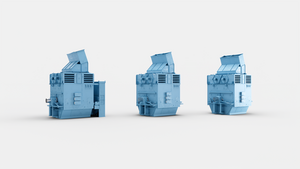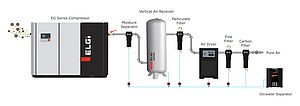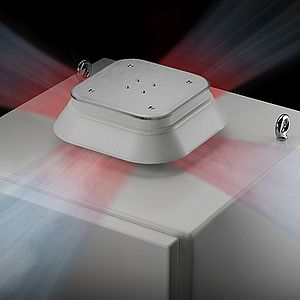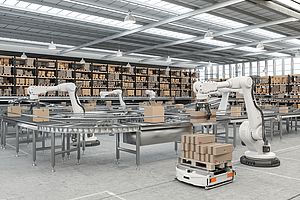By David R. Brousell | Manufacturing Executive | November 3, 2010
Thousands of manufacturers began gathering yesterday to attend the 19th annual Automation Fair, Rockwell Automation’s user conference and partner event, at the vast Orlando Convention Center. They come to network with each other and share stories, learn how to better use Rockwell’s technology arsenal, and discover what Rockwell’s partners may bring to the table. And there are always those who also come for personal reasons — like finding a new job or a business opportunity. But yesterday, the Automation Fair was also the venue for a group of manufacturing and technology executives to discuss what the future may hold for factories — how we think about them, organize them, run them, and use technology to automate them.
Under the auspices of Manufacturing Executive, Evan Hand Jr., director of electrical and controls at ConAgra Foods; Tom Mascari, VP at FONA International; Jim Davis, vice provost at UCLA; John Genovesi and Bob Honor, both VPs at Rockwell Automation; Bob Dean, executive director, and Stuart Robinson, head of industrial automation, Cisco Systems; Jordan Berkley, director, MES product management, at Apriso; and Craig Resnick, research director at ARC Advisory Group, met for four hours to envision the future factory.
What they sketched out was a mixture of the practical and the hopeful. Apart from special guests invited by ME, all are members of ME’s Manufacturing Leadership Council, a new group of manufacturing executives dedicated to the idea of creating a better future for manufacturing. (You can find out more about this group at www.manufacturing-executive.com/.) On the practical side, and clearly in line with current business thinking about production, panelists were in agreement that future factories and plants must have the ability to be agile and flexible in responding to business trends and customer demands. A well-educated and motivated workforce, and one in sufficient numbers, is mandatory. At the same time, they believe that no one model will define what a future factory looks like. Some will be large, some smaller; some will serve local needs, while others will be globally oriented. But all, the panelists said, will be increasingly information-driven and dependent upon advancements in automation and information technologies, particularly ongoing developments in cloud computing, software-as-a-service, collaboration, and manufacturing intelligence. The “smart” or increasingly “intelligent” plant is headed our way.
But to achieve all of this is no easy task or set of tasks. In fact, creating the fast-moving, information-driven, high-tech factory of the future may run the risk of ever more — you guessed it, the “C” word — complexity. It’s complexity that must be dealt with effectively at the same time we speed forth with ideas about the future factory, or hoped-for gains in productivity, efficiency, and flexibility may not be realized. Keep it simple, but not simplistic, was a major message from the panel yesterday. Increased complexity through new layers of technology and the integration that will attend them is an inevitability, but it must be masked, shielded from the user. As UCLA’s Jim Davis said, “Complexity is the interaction of simple things.” That’s a lesson to be learned. Tonight, another group of Manufacturing Leadership Council members meet in New Jersey to tour a L’Oréal plant and discuss the subject of global manufacturing.




 IEN Europe's mission is to provide its readers with information about new products and services related to industrial engineering that become available in Europe from around the world. So, if you would like your company's new products to be considered for coverage in IEN Europe, please send our editors a technical press release.
IEN Europe's mission is to provide its readers with information about new products and services related to industrial engineering that become available in Europe from around the world. So, if you would like your company's new products to be considered for coverage in IEN Europe, please send our editors a technical press release.
















































